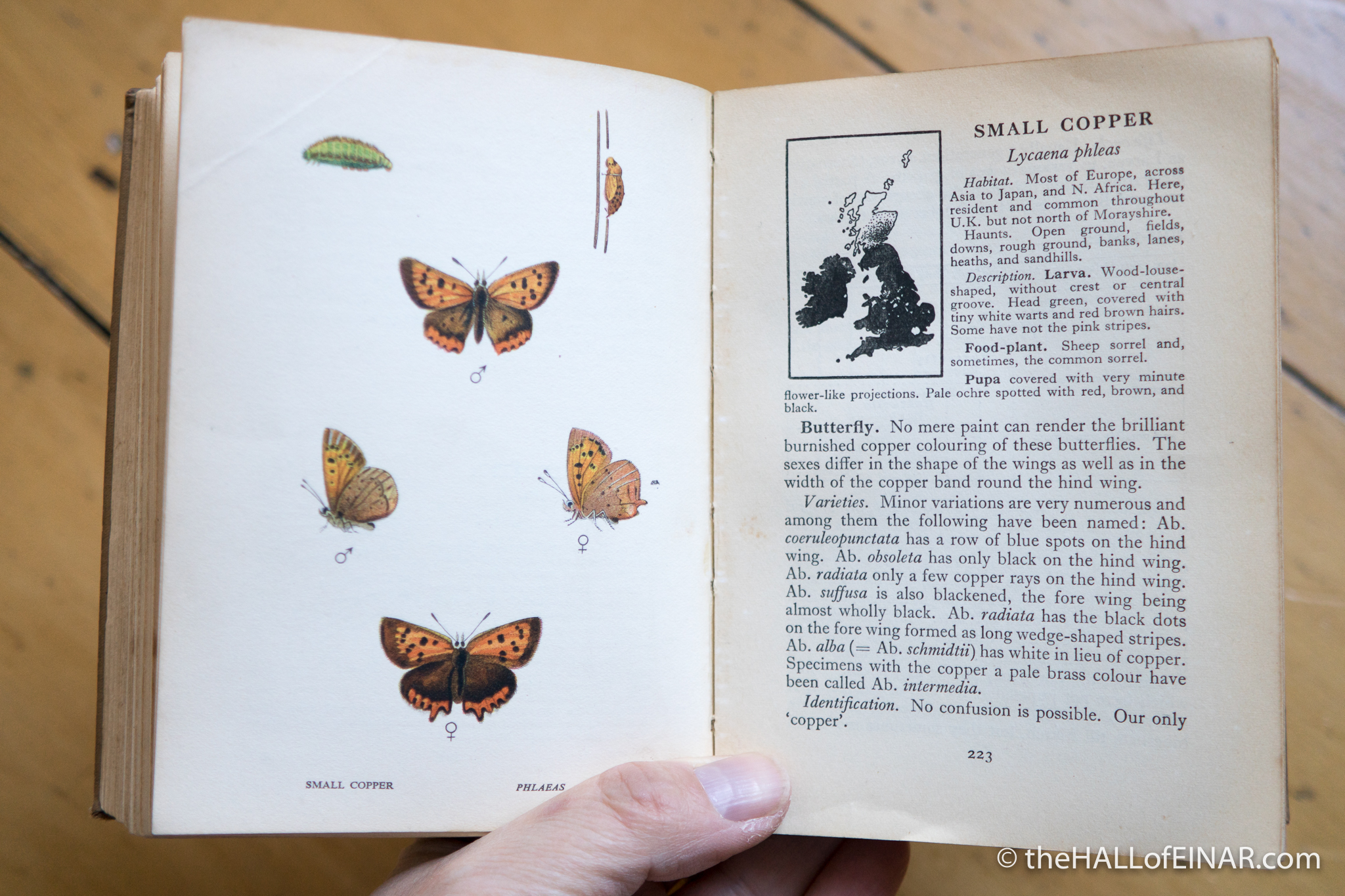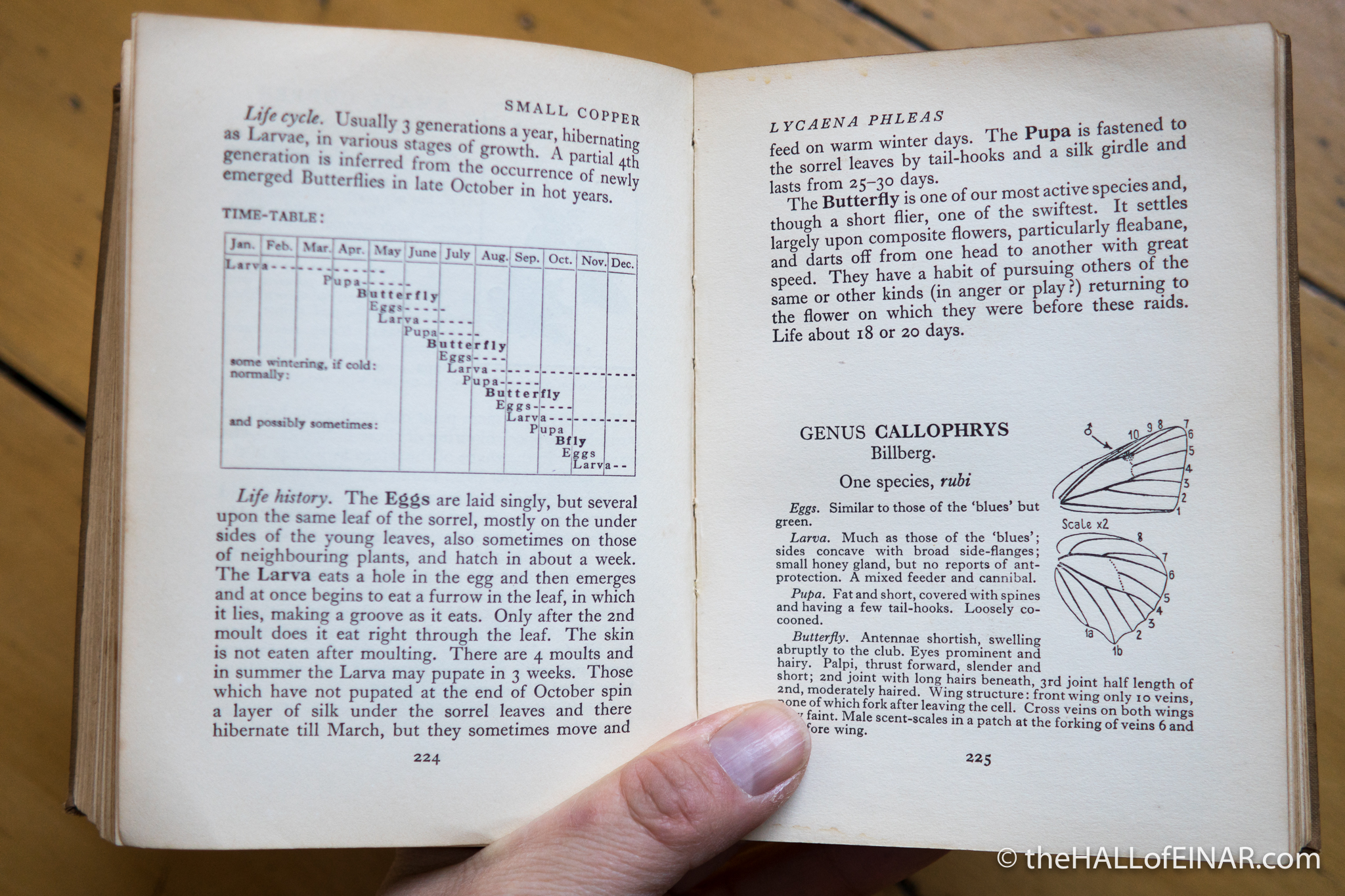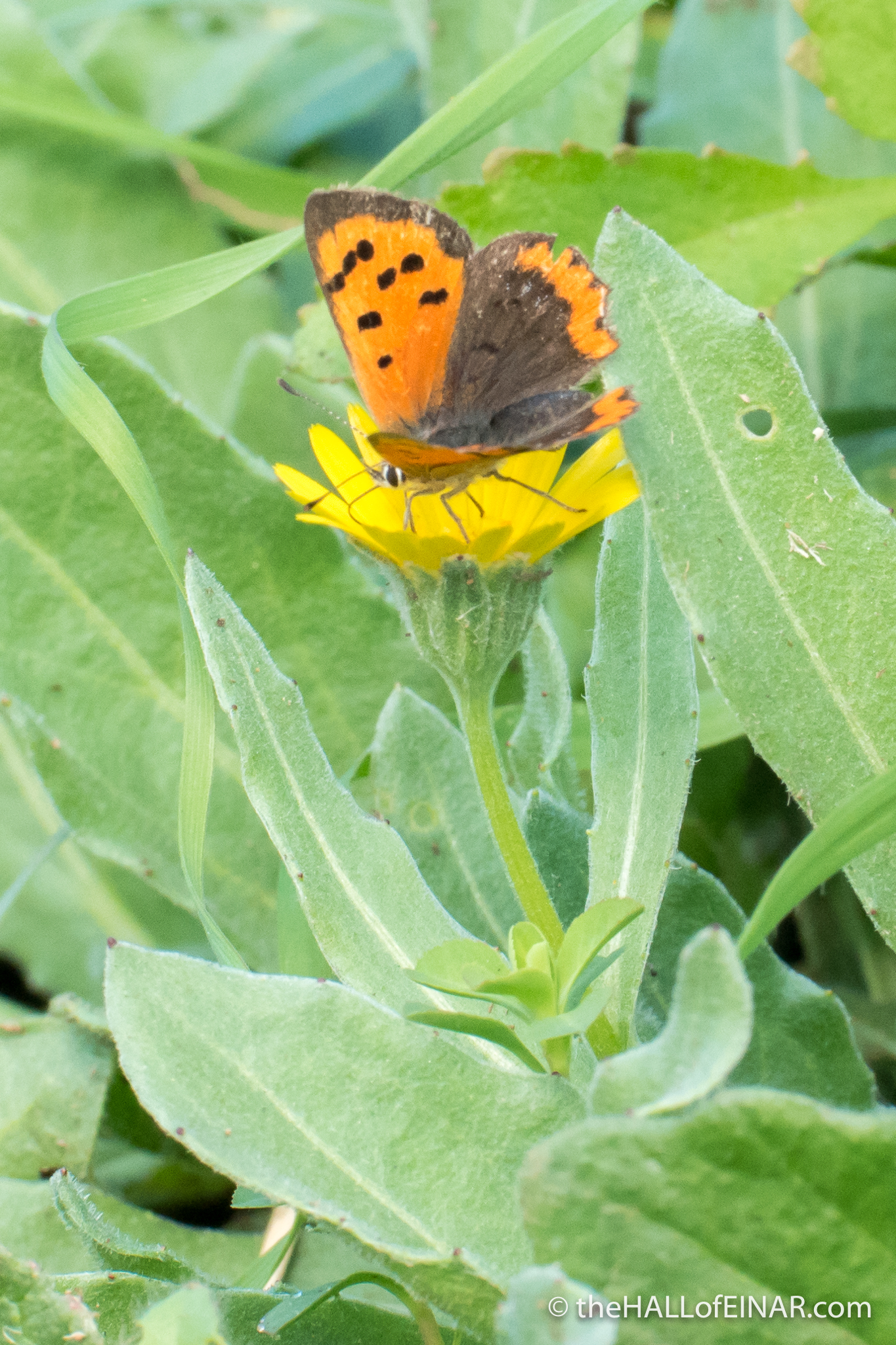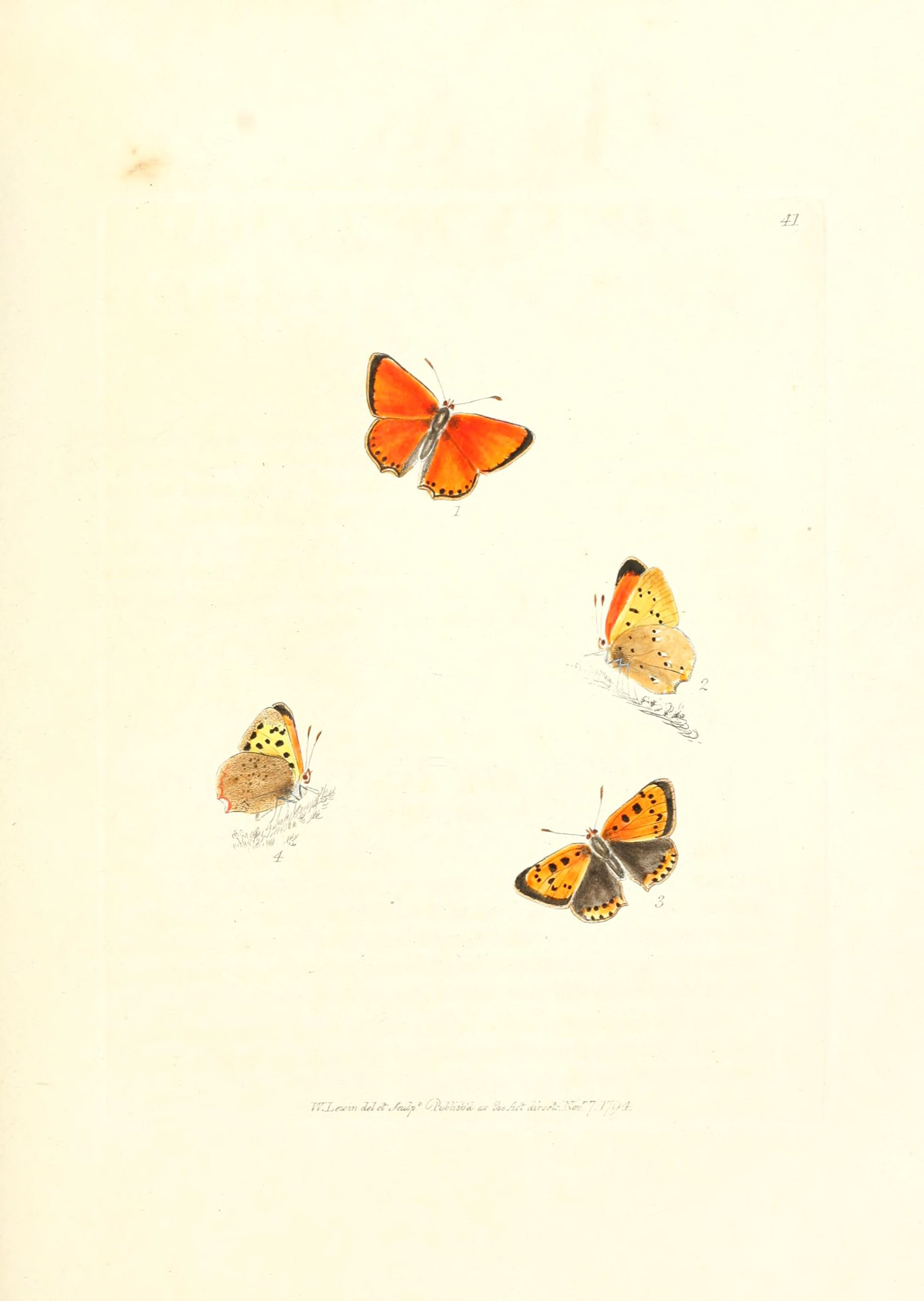Small Copper Butterfly
There’s a deep orange butterfly flying quickly across the fields in a park in Rome. It’s a Small Copper Lycaena phlaeas:
Nothing else is that colour of orange.
Back home I’m leafing through my favourite 30 pence purchase: Edmund Sandars’ A Butterfly Book for the Pocket from 1939:
“Open ground, fields, downs, rough ground, banks, lanes, heaths and sandhills.”
It also appears in the Rev. F.O. Morris’s 1853 classic A History of British Butterflies here:
“It is an exceedingly elegant object on the wing”
Here’s the colour plate which accompanies it:
I haven’t got a copy of this book. I’d certainly give more than 30 pence for it; it’s an exceedingly elegant object.
It’s a glorious November day in Rome and there are blue skies with a single white cloud which appears to be permanently obscuring the sun. The butterflies are busy feeding on nectar:
The Small Copper is also in The Papilios of Great Britain, Systematically Arranged, Accurately Engraved and Painted from Nature by W Lewin from 1795:
“This is a common fly, and to be met with in almost every place that grass grows.”
It’s also in John Berkenhout’s 1769 Outlines of the Natural History of Great Britain and Ireland (Vol.1 Animal Kingdom) here. He calls it the Small Golden Black-Spotted Butterfly:
The world has changed utterly for human beings since that time and yet I’m standing here with the same sense of wonder and delight as those enthusiasts, artists and authors did hundreds of years ago:












